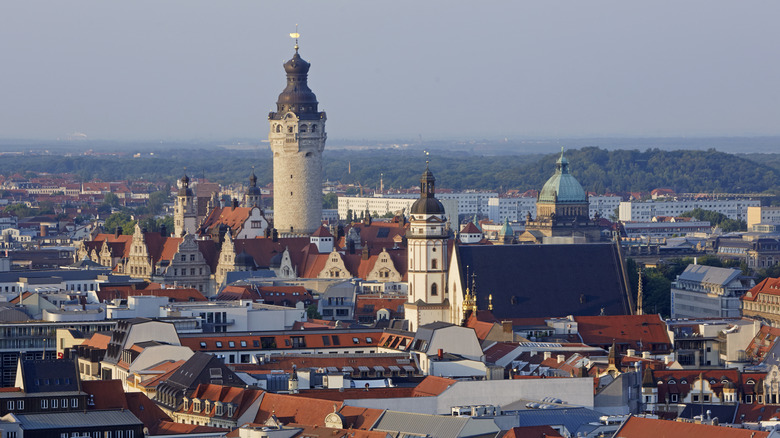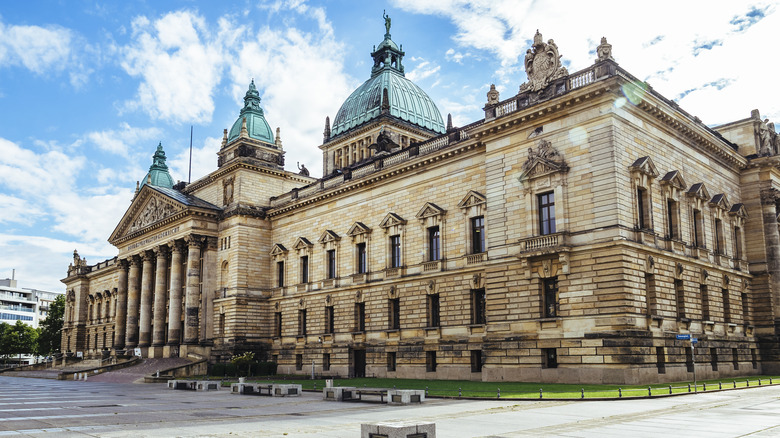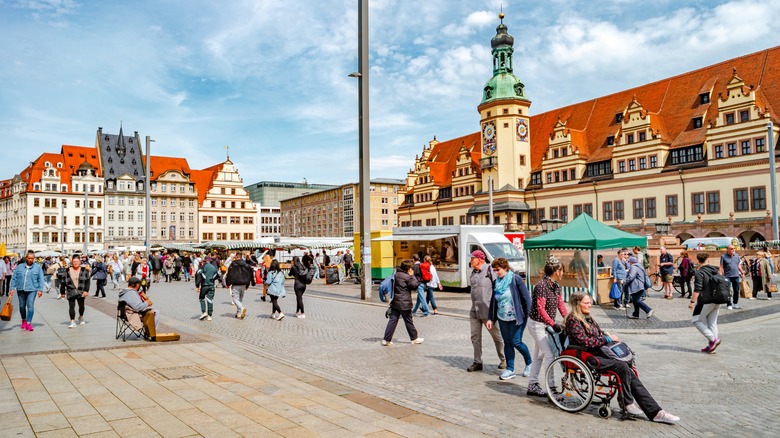Discover The Magic Of Berlin With Fewer Crowds And Lower Prices In This Underrated German City
Germany's bustling capital city is the quintessential European metropolis. Berlin's magic lies in how it juxtaposes its rich history with its dynamic contemporary arts, music, and lifestyle scenes. And then there's Berlin's notorious (in a good way!) nightlife. However, the city's fast-paced life and thronging crowds can be a bit overwhelming. Unless you decide to spend an extended period there, trying to get a feel of the city in a short visit is difficult, especially for solo travelers to Europe, not to mention expensive.
Leipzig is a less explored and more pocket-friendly German city that offers many of the experiences that people visit Berlin for, as well as some novel ones. A quick train or car ride (both under 3 hours) from Berlin, Leipzig welcomes those who choose the former with its iconic central railway terminus, Leipzig Hauptbahnhof. Almost mind-boggling in size, it is the largest train station in Europe. Flying into the internationally well-connected Leipzig/Halle Airport is also an option.
Visitors quickly find that Leipzig matches Berlin when it comes to imposing structures and is dotted with prime examples of Renaissance architecture, open squares, and a charming Old City Center. The burgeoning art scene and nightlife fueled by the city's young population also ensure that you won't feel like you're missing out on the action. While another underrated German city is lovingly called "Venice of the North," Leipzig was referred to as "little Paris" by Germany's literary monolith, Johann Wolfgang von Goethe, in his iconic play, "Faust."
Leipzig's attractions are compareable to Berlin's, and less crowded
Leipzig's history spans over a thousand years, and it's been an important European hub since the 18th century. As a result, the city's historic parts are a colorful tapestry of monuments and old buildings. It is also where, in 1813, Napoleon's army faced a decisive defeat and had to withdraw from Germany. The commemorative Monument to the Battle of the Nations is also one of the city's many high vantage points, offering breathtaking views of the skyline. It stands at 299 feet, making it the tallest monument in Europe. The Old City Centre and nearby St. Nicholas' Church and the Old Town Hall, as well as the exquisite, recently renovated Old Stock Exchange building, are all noteworthy. Leipzig's Goethe statue, while not as old as the one in Berlin (which was erected in 1880), is still a historical treasure, having been built in 1903.
Berlin's iconic Brandenburg Gate is known for its vast square lined with historic buildings. Leipzig's Augustuplatz evokes a similar sense of awe with its scale and 360-degree view of impressive architecture. The Leipzig Opera, the second oldest opera house in Germany after Hamburg and the third oldest in the world, is a great place to dive into the city's rich classical music scene that's hosted the likes of Bach and Mendelssohn. Leipzig's relatively low cost of living also attracts artists, and the Baumwollspinnerei, or Cotton Mill is a vast area encompassing numerous art studios and over a dozen art galleries.
Leipzig is pocket friendly and easier to explore than Berlin
While you may end up paying outrageous amounts for hotels in Berlin, especially if you stay in one of its multiple busy hubs, the risk of that happening in Leipzig is much lower. The cost of living in Leipzig is generally lower, so not only do you pay less for your stay and local transport, but even an inexpensive meal that costs about €15 in Berlin will, on average only cost a little over €10 in Leipzig. Look carefully and you'll actually find several places to eat well on a shoestring budget in Europe.
As the largest city in Germany, Berlin can be daunting to get around in and its complicated public transport network, though comprehensive, takes some getting used to. At a fraction of its size, Leipzig is much easier to navigate. Many popular spots can be reached with an easy walk, often through one of the city's many parks. If you plan on using public transport, a Leipzig Card is a one-time purchase that then gives you free access to tram, train, and bus lines within the city. Another option is to take a languid boat ride down the Karl-Heine-Canal. This scenic destination offers views of picturesque bridges and the city's historic architecture along its 2-mile route. It is also part of Leipzig's growing water network that aims to connect dozens of lakes and waterways in the region, so a longer boat route is possible for more intrepid explorers.


